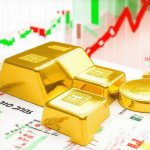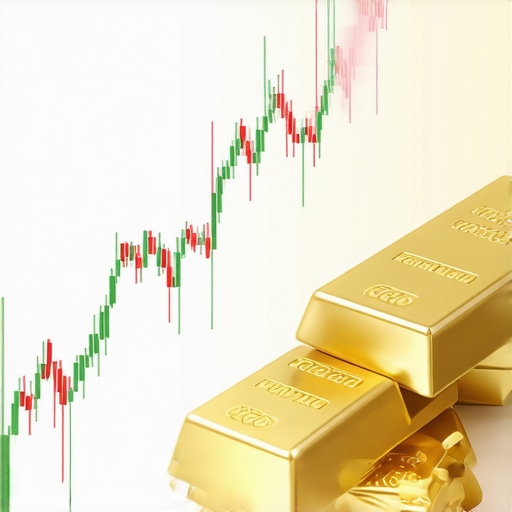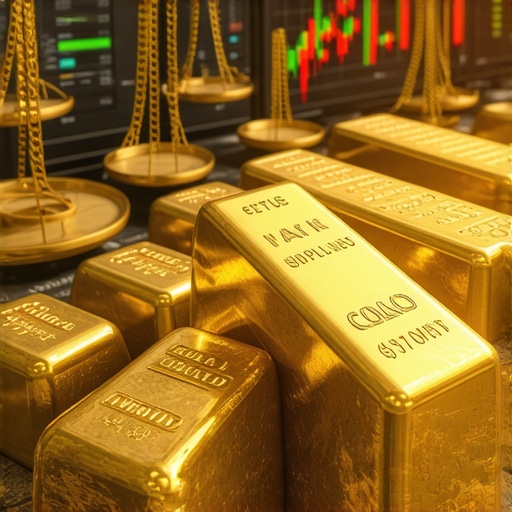Understanding the Complex Interplay Between Gold Supply, Demand, and Market Prices in 2025
The gold market’s trajectory in 2025 is shaped by a confluence of intricate supply and demand factors, which collectively influence pricing and investor sentiment. As a seasoned analyst, I recognize that this interaction is far from linear, often reflecting macroeconomic shifts, geopolitical tensions, and evolving investment strategies. To comprehend the future of gold prices, it is essential to dissect the underlying drivers that orchestrate this delicate balance.
How Do Supply Constraints and Production Trends Influence Gold Prices?
One of the critical aspects in forecasting gold prices involves analyzing the supply side, including mining outputs, central bank reserves, and recycled gold. Notably, disruptions in major gold-producing regions—such as South Africa and Australia—can tighten supply, thereby exerting upward pressure on prices. Furthermore, the trend towards sustainable mining practices and automation impacts the cost structure and output levels, complicating supply forecasts. According to a recent report from the World Gold Council, global gold mine production saw a marginal decline in 2023, hinting at potential scarcity if demand persists or intensifies.
Demand Drivers: Investment, Jewelry, and Industrial Usage
On the demand front, investment demand remains paramount, particularly through ETFs, futures, and physical holdings. As global economic uncertainties and inflation fears persist, gold continues to be perceived as a hedge, bolstering its appeal among institutional and retail investors. Additionally, jewelry demand—especially in emerging markets like India and China—continues to influence overall consumption. Industrial applications, though relatively stable, also contribute via technological uses in electronics and aerospace, aligning with trends in innovation and green technologies. The interplay of these demand segments creates a complex, dynamic environment for price movements in 2025.
Will Geopolitical and Macro-Economic Factors Drive Price Volatility?
Geopolitical tensions, currency fluctuations, and monetary policies significantly impact gold’s market behavior. For instance, expansionary monetary policies by central banks to combat inflation can depreciate fiat currencies, thereby elevating gold prices. Conversely, stabilization measures or rate hikes may diminish its appeal. The role of central bank gold purchases, which tend to diversify reserves and hedge against currency risks, remains a crucial factor. Analyzing these macroeconomic signals provides insight into potential volatility and long-term trends for gold in 2025.
What Are the Most Effective Strategies to Hedge Against Future Price Fluctuations?
Investors seeking to hedge against volatility should consider diversified approaches, including physical gold, ETFs, and futures. A balanced portfolio that leverages technical analysis and market timing can optimize returns. For instance, utilizing futures market analysis techniques can help anticipate short-term shifts, aligning with expert strategies outlined here: Maximize Your Gold Returns with Futures Market Analysis Techniques. Staying informed on supply-demand trends and geopolitical developments is vital for making informed decisions.
If you are interested in exploring advanced investment tactics, I encourage you to examine our comprehensive guides on gold ETFs and physical investment strategies. Sharing your insights or consulting with industry experts can further refine your approach in navigating 2025’s unpredictable market landscape.
Unlocking the Power of Dynamic Portfolio Allocation in Gold Investing
Given the multifaceted nature of gold market drivers in 2025, investors must adopt a nuanced approach to portfolio diversification. Strategic allocation between physical gold, ETFs, and futures contracts enables risk mitigation while capturing growth opportunities. For example, blending physical assets with ETF exposure can hedge against short-term volatility, while futures trading offers leverage for tactical entry and exit points. Insights from market analysis suggest that a diversified gold strategy enhances resilience against macroeconomic shocks and geopolitical upheavals.
How Can Technical Analysis Elevate Your Gold Trading Success?
Technical analysis remains a cornerstone for identifying optimal entry and exit points in gold markets. Techniques such as moving averages, RSI, and Fibonacci retracements can reveal underlying trend shifts and momentum changes. Advanced traders leverage these tools to anticipate price reversals or continuations, especially in volatile periods characteristic of 2025. For instance, analyzing gold’s price momentum relative to key support and resistance levels can inform timely trades. For a comprehensive guide on implementing these techniques effectively, visit Maximize Your Gold Returns with Futures Market Analysis Techniques.
Is Gold Still a Reliable Hedge in an Evolving Economic Landscape?
Many investors question the enduring reliability of gold as a safe haven amid shifting economic paradigms. While gold historically serves as an inflation hedge and geopolitical risk buffer, its effectiveness depends on macroeconomic conditions, monetary policies, and investor sentiment. Recent trends indicate that gold’s role as a hedge remains vital, especially during periods of currency devaluation and rising inflation expectations. According to a report by the World Gold Council, gold’s unique qualities position it as a resilient store of value, even as markets evolve (Gold as a Hedge). Understanding these dynamics enables investors to strategically incorporate gold into their long-term wealth preservation plans.
Are you interested in discovering more about how to harness gold’s potential in your investment portfolio? Consider exploring our detailed guides on diversified investment strategies, including gold ETFs, mutual funds, and physical assets, designed to help you navigate the complexities of 2025’s market environment effectively. Sharing insights and engaging with expert resources can significantly enhance your investment outcomes.
Deciphering the Role of Macroeconomic Indicators in Gold Price Dynamics
As the global economy becomes increasingly interconnected, macroeconomic indicators such as inflation rates, employment figures, and GDP growth play pivotal roles in shaping gold’s market trajectory. For instance, rising inflation often prompts investors to seek the safety of gold as a hedge, exerting upward pressure on prices. Conversely, signs of economic stabilization or growth can diminish gold’s appeal, leading to potential price corrections. Analyzing these indicators with sophisticated econometric models allows investors and analysts to forecast short-term fluctuations and long-term trends with greater precision.
Integrating Quantitative Models for Gold Price Forecasting
Advanced quantitative models, including machine learning algorithms and stochastic processes, are increasingly employed to predict gold prices. These models synthesize vast datasets—ranging from macroeconomic variables to market sentiment indicators—enabling a nuanced understanding of complex interactions. For example, neural networks trained on historical price patterns and economic variables can uncover non-linear relationships that traditional models might overlook. Implementing these tools requires expertise in data science and finance but can significantly enhance decision-making accuracy in volatile markets.
How Do Central Bank Policies Influence Gold Market Liquidity and Pricing?
Central banks’ monetary policies, particularly regarding interest rate adjustments and reserve management, directly impact gold’s liquidity and pricing. When central banks signal dovish policies, such as lowering interest rates or engaging in asset purchases, the opportunity cost of holding non-yielding assets like gold decreases, often boosting demand. Conversely, tightening monetary policies can lead to a shift away from gold as yields rise elsewhere. Moreover, central bank gold reserves and their buying or selling activities can induce significant price movements, especially when coordinated with global reserve management strategies.
What Are the Emerging Risks and Opportunities in Gold Investment Amid Geopolitical Shifts?
Geopolitical developments—such as conflicts, trade wars, and diplomatic realignments—introduce both risks and opportunities for gold investors. Heightened tensions typically elevate gold’s safe-haven status, pushing prices higher. However, unexpected resolutions or shifts in geopolitical alliances can quickly reverse these trends. Investors should consider geopolitical risk assessments and scenario planning to optimize their positions. Emerging markets and geopolitical hotspots require close monitoring, as they can serve as catalysts for rapid price swings or sustained trends over the coming months.
For those committed to mastering gold market intricacies, engaging with specialized analytical tools and staying informed through reputable industry reports—such as the World Gold Council’s detailed market analyses—are essential. Deepening your understanding of these complex factors equips you to navigate volatility and capitalize on emerging opportunities effectively.
Enhancing Portfolio Resilience through Dynamic Gold Allocation
Incorporating gold into diversified portfolios involves more than static allocation; it requires dynamic rebalancing based on real-time market signals and predictive analytics. Tactical asset allocation strategies, which adjust gold exposure in response to macroeconomic shifts or technical indicators, can mitigate downside risks while maximizing upside potential. For example, increasing physical gold holdings during inflation surges or geopolitical crises can serve as a hedge, while trimming exposure during periods of market exuberance preserves capital. Employing sophisticated risk management techniques—such as value-at-risk (VaR) and stress testing—further fortifies investment resilience.
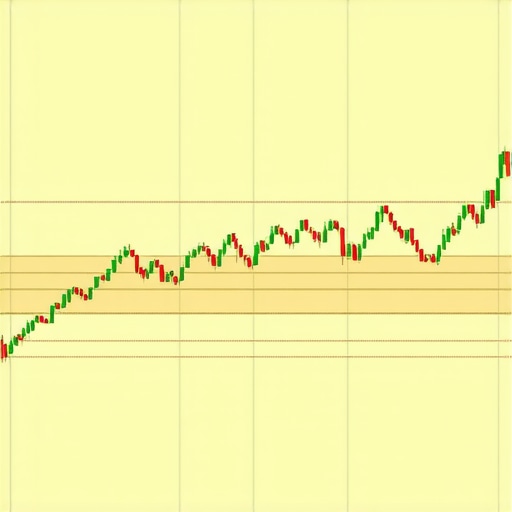
Visualize the complex relationship between macroeconomic indicators, geopolitical risks, and gold price movements with this illustrative chart.
Deciphering the Impact of Technological Innovations on Gold Extraction and Quality Standards
The rapid advancement of technology in the mining sector significantly influences gold supply quality and quantity. Innovations such as automation, AI-driven exploration, and sustainable extraction techniques are reshaping production efficiency and environmental impact. These developments not only enhance yield but also introduce new standards for gold purity and traceability, which are critical for high-end investors and industrial applications. According to a detailed study by the World Gold Council, technological integration is expected to reduce operational costs and improve the sustainability profile of gold mining, thereby affecting market supply dynamics in the coming years.
How Do Changing Consumer Preferences and Ethical Considerations Reshape Demand for Gold?
Consumer behavior is increasingly influenced by ethical sourcing and environmental concerns, prompting a shift towards certified and responsibly mined gold. This trend affects demand patterns, especially in luxury jewelry markets and institutional procurement. Certification schemes like the Responsible Gold Mining Principles (RGMP) are gaining prominence, impacting supply chains and pricing structures. Moreover, the rising popularity of recycled gold as a sustainable alternative creates a niche market that influences overall demand elasticity. These evolving preferences necessitate investors to consider not just price trends but also the provenance and ethical credentials of their holdings.
What Are the Critical Risks and Opportunities Emerging from Geopolitical Realignments?
Geopolitical shifts—such as trade sanctions, regional conflicts, and diplomatic realignments—pose multifaceted risks to gold markets. While heightened tensions generally bolster gold’s safe-haven appeal, sudden peace agreements or policy shifts can precipitate rapid price declines. Conversely, emerging markets with expanding middle classes and infrastructural development represent opportunities for increased industrial and jewelry demand, buffering against geopolitical risks elsewhere. Analyzing geopolitical risk indices with high granularity enables investors to identify tactical entry and exit points to optimize returns amid volatility.
What Advanced Analytical Techniques Can Elevate Gold Investment Strategies?
Employing sophisticated analytical tools such as machine learning, sentiment analysis, and econometric modeling allows for a nuanced understanding of gold price drivers. For instance, neural networks trained on macroeconomic data, geopolitical news, and market sentiment indicators can forecast short-term fluctuations with notable accuracy. Integrating these models into trading algorithms enhances real-time decision-making, reducing exposure to unpredictable shocks. For further insights, consult reputable sources like Quantitative Finance Journal, which explores cutting-edge modeling approaches for commodity markets.
If you wish to deepen your mastery over these complex factors, consider subscribing to specialized industry reports and engaging with expert forums. Leveraging advanced analytics and geopolitical intelligence can significantly elevate your gold investment outcomes in 2025 and beyond.
Innovating Portfolio Diversification Through Non-Traditional Gold Assets
Beyond conventional holdings, alternative gold-related assets such as blockchain-backed tokens, gold streaming and royalty companies, and gold-linked derivatives offer new avenues for diversification. These instruments often provide liquidity, leverage, and exposure to different risk-return profiles, aligning with various investor strategies. For example, gold-backed tokens facilitate fractional ownership and seamless transactions, while streaming companies offer leverage to gold price movements with lower capital requirements. Understanding the nuances and risk factors associated with these assets enables sophisticated portfolio construction tailored to evolving market conditions.
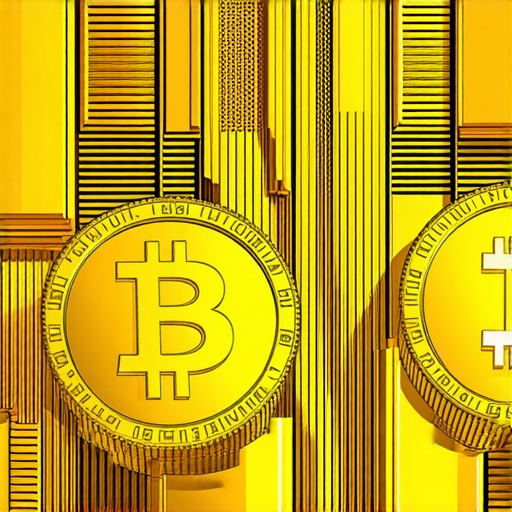
Illustration of diversified gold investment instruments: tokens, streaming companies, and derivatives, showcasing modern portfolio options.
Expert Insights & Advanced Considerations
1. Diversification Is Crucial in Uncertain Markets
As a seasoned analyst, I emphasize that diversifying your gold investments across physical assets, ETFs, and futures can mitigate risks and enhance returns, especially given the unpredictable macroeconomic environment of 2025.
2. Leverage Advanced Analytical Tools
Utilize machine learning models and sentiment analysis to forecast short-term gold price fluctuations, enabling more precise timing of entry and exit points in your portfolio.
3. Monitor Geopolitical Developments Closely
Geopolitical tensions significantly impact gold prices. Staying informed through real-time geopolitical risk assessments allows investors to capitalize on safe-haven demand or avoid pitfalls during sudden declines.
4. Focus on Ethical and Sustainable Gold Sources
With changing consumer preferences, responsibly sourced gold and certified products are gaining importance, influencing demand and pricing structures in 2025.
5. Incorporate Technological Innovations in Mining
Advancements such as automation and AI-driven exploration are improving supply chain efficiency, affecting supply dynamics and market stability.
Curated Expert Resources
- World Gold Council: Provides comprehensive market analysis, supply-demand trends, and sustainability reports crucial for understanding long-term market dynamics.
- Quantitative Finance Journal: Offers insights into cutting-edge quantitative models and machine learning applications in commodity forecasting, essential for sophisticated investors.
- Financial Times – Markets Section: Delivers up-to-date geopolitical and macroeconomic news impacting gold prices, aiding timely decision-making.
- International Monetary Fund (IMF): Supplies macroeconomic data and analyses that influence gold’s role as a hedge and safe haven.
- Responsible Gold Mining Principles (RGMP): Guides on ethical sourcing, demand shifts, and market reputation management in gold investments.
Final Expert Perspective
In 2025, gold continues to serve as a vital component of diversified investment portfolios amidst macroeconomic and geopolitical complexities. Strategic allocation, advanced analytics, and a keen eye on sustainability and technological progress are essential for capitalizing on emerging opportunities and mitigating risks. Professionals should deepen their understanding through authoritative resources and stay agile in response to market shifts. For those committed to mastering gold investment strategies, engaging with these insights and resources will be instrumental in navigating the evolving landscape. We invite you to share your expertise and explore comprehensive guides to refine your investment approach further.
